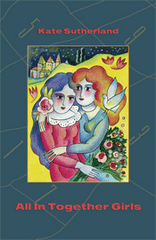
I recently reconnected with a childhood friend on Facebook, and she reminded me that, at the age of ten, I was already telling anyone who asked that I was going to be a lawyer when I grew up. As it turns out, I became a law professor, but I remain a paid-up (albeit non-practicing) member of the Saskatchewan Bar, so mission accomplished, more or less. The focus of this post, though, is not the attainment of the goal but what inspired it. Where did I get the idea that a lawyer was a thing to be, and what sort of work did I envision a lawyer doing?
There are two of us now, but back then there were no lawyers in my family, or even in my family history. (Recent genealogical research has confirmed the latter perception. I’ve turned up shepherds, coalminers, steelworkers, carpenters, calico printers, tailors, domestic servants, schoolteachers, and even one errant phrenologist, but no lawyers.) Nor were there any lawyers amongst the family members of my friends. My childhood pre-dated the heyday of television legal dramas, so I don’t think that I can locate the inspiration there. I might have caught the odd Perry Mason rerun, but I was already in law school by the time L.A. Law and Street Legal arrived on the small screen.
So I can only conclude that, as is true of many of my good ideas, it came from books. But which books? Who are the lawyers of children’s literature? I have thought long and hard about my childhood reading, particularly beloved repeat reads, and I can recall only two fictional lawyers that got more than a passing mention.
The first appears in From the Mixed-up Files of Mrs. Basil E. Frankweiler by E.L. Konigsburg. The novel details the adventures of eleven-year-old Claudia Kincaid when, feeling underappreciated, she runs away from her suburban Connecticut home with her nine-year-old brother Jamie in tow, and takes up residence in the Metropolitan Museum of Art in New York City. But the tale is not told by either of the youthful protagonists; the book is narrated by Mrs. Basil E. Frankweiler, an elderly, eccentric patron of the arts, in the form of a letter to Saxonberg, her lawyer of 41 years, instructing him to change her will and explaining why she wishes him to do so. Throughout, Mrs. Frankweiler represents Saxonberg as no friend of the arts. He’s dull and boring, caring only for law, taxes, and his grandchildren. He’s “never set [his] well-polished toe inside that museum,” and is “altogether unconscious of the magic of Michelangelo.” Though it is apparent by the end that this is not an entirely accurate picture, it nevertheless renders Saxonberg an unlikely role model for my ten-year-old self who had artistic as well as legal aspirations. I might credit the book with stoking my interest in museums and art galleries, and certainly with contributing to the fascination that New York City held for me decades before I ever traveled there. But I rule it out as an early impetus to pursue a legal career.
That leaves Carson Drew, “well-known lawyer,” and father to teenage sleuth Nancy Drew. But surely, I thought, Carson Drew played only a bit part in the series, keeping well in the background as parents are wont to do in children's literature to accord child characters plenty of room for independent action. Not so, I found after a bit of rereading. Certainly he doesn't get in the way of Nancy's independence⎯she whisks about the countryside in that enviable blue convertible with his blessing. But he's a solid presence and his legal work is far from an incidental detail. On the first page of the first installment of the series, The Secret of the Old Clock, we're told that he "frequently discussed puzzling aspects of cases with [Nancy]," and thereafter we find that her investigations are sometimes undertaken to assist in his work. Even when her cases are not connected with his, they tend to focus on legal matters (wills, trusts, contracts, and patents, alongside the more readily anticipated counterfeiting, theft, and kidnapping), and legal information or advice from him or one of his colleagues often proves pivotal in solving the mysteries. Further, when her father praises her investigative prowess, the compliments are sometimes couched in legal terms. "'You sound like a trial lawyer, the way you cross-examine me,' Mr. Drew protested, but with evident enjoyment." And later: "Excellent deducting."
Perhaps, then, I fancied that lawyers' work involved Nancy Drew style investigation but with a paycheque attached, and I really ought to have set my sights on a career as a private detective. If it was Nancy rather than Carson Drew who served as primary role model and inspiration, then I'm in good legal company, standing with the likes of U.S. Supreme Court justices Sandra Day O’Connor, Ruth Bader Ginsburg, and Sonia Sotomayor. Still, I can't help but think that for me, and perhaps for them too, the legal aspect contributed to the allure.
But the notable lawyers of children's literature must number more than two. Who have I missed? Please share any names that occur to you in the comments section below.
